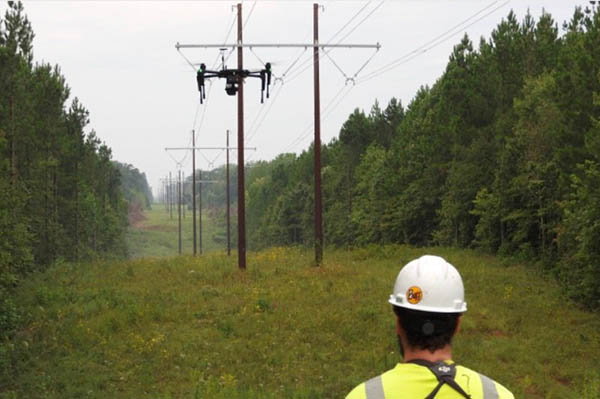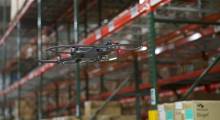Aerial drones promise to help utility providers with safer and more efficient inspections, but they require qualified pilots. PrecisionHawk Inc. today said it is working with the National Rural Electric Cooperative Association “to bring a new wave” of unmanned aerial vehicle instruction to electric co-ops across the U.S. The course and skills assessment are designed to increase drone pilots’ knowledge and confidence to inspect electricity transmission and distribution assets.
The National Rural Electric Cooperative Association (NRECA) represents nearly 900 local electric cooperatives. From growing suburbs to remote farming communities, electric co-ops serve as engines of economic development for 42 million Americans across 56% of the nation’s landscape, said the association. Electric cooperatives invest $12 billion annually in rural communities, it added.
Electric cooperatives own and maintain 2.7 million miles of electric distribution lines across 48 states, and about 300 electric co-ops currently use drones as part of their operations processes, according to NRECA.
“We’re proud to work with NRECA to bring this new program to co-ops, which play a critical role in powering and transforming communities,” stated Robert Henley, vice president of energy solutions at PrecisionHawk. “Many certified FAA Part 107 pilots lack live flight experience, and our program is specifically designed to give them hands-on field experience to help them carry out inspections of their transmission and distribution assets with greater confidence and higher levels of safety.”
PrecisionHawk said it automates geospatial (GIS) data acquisition and analysis for enterprises. The Raleigh, N.C.-based company said its portfolio of GIS services and tools enables organizations to safely collect data and make precise decisions while managing their physical assets at scale. Built on more than a decade of experience in applications in remote sensing and analysis, PrecisionHawk has raised more than $100 million from leading venture capital firms.
Program to provide next step after FAA exam
The program includes approximately 10 hours of flight time in the field where pilots will learn the dos and don’ts of flying, safety tips for navigating hazardous environments and emergency situations, and industry best practices for maintaining unmanned aerial systems (UAS) and increasing equipment lifespan.
The full skills assessment will ultimately test pilots on skill competencies regarding drone-led energy inspections and how to efficiently run a single pilot operation. Upon completion of the training program, participants will receive a certificate of accomplishment.
“Developing your flight skills and being able to use them in real-world situations is an important next step after passing the FAA exam to become a FAA-certified drone pilot,” said Stan McHann, a senior research engineer and chief UAS pilot at NRECA. “This program assesses attendee’s UAS piloting skills and helps them understand the UAS sensors in a variety of complex environments.”
“Participants who successfully complete the PrecisionHawk and NRECA skills assessment will have additional tools and knowledge to enhance their ability to complete data acquisition and utility inspection missions for their co-ops,” he said.
The skills assessment is based on the National Institute of Standards and Technology (NIST) and American Society for Testing and Materials (ASTM) standards for UAS.
To officially launch the collaboration, PrecisionHawk and NRECA are scheduling multiple trainings in a variety of locations. To learn more about the program, see upcoming dates, and register, visit https://lp.precisionhawk.com/a-new-standard-for-drone-pilot-education.
Article topics
Email Sign Up
















